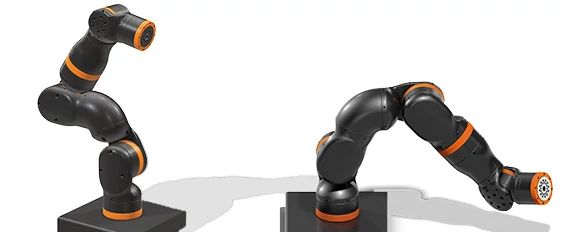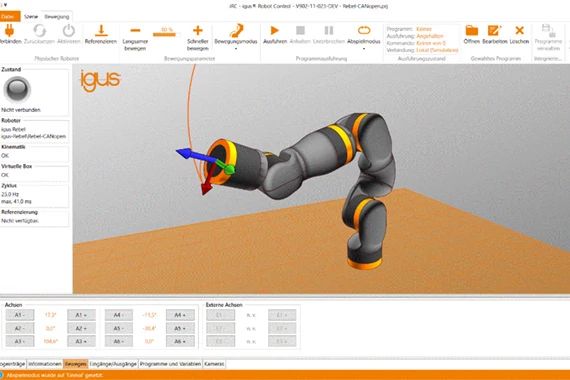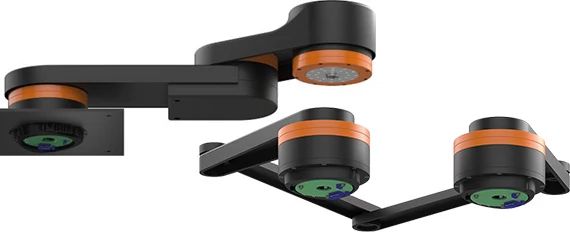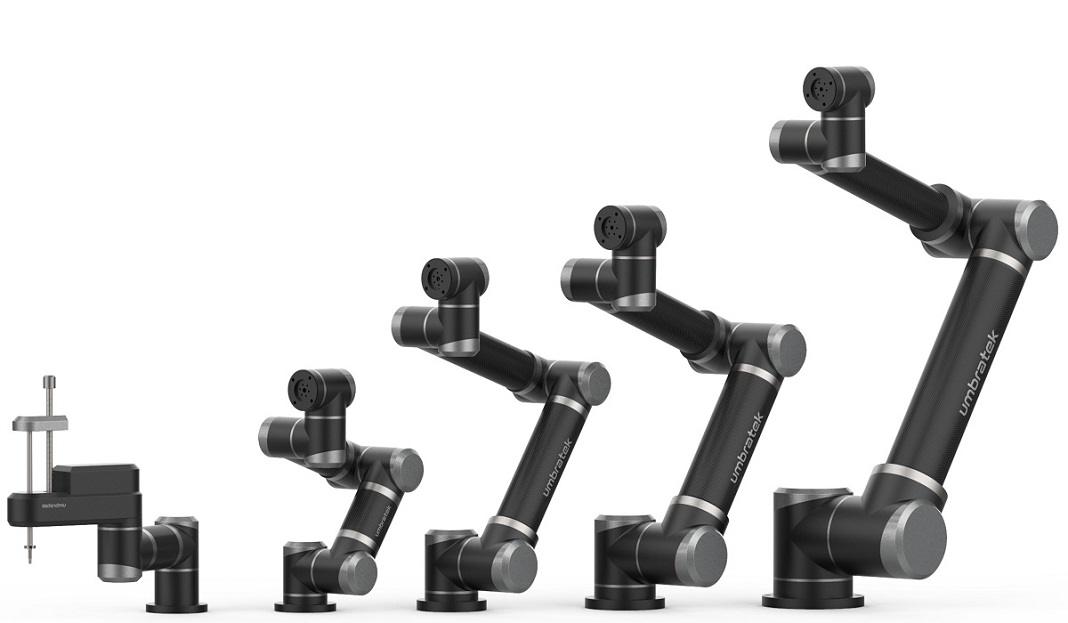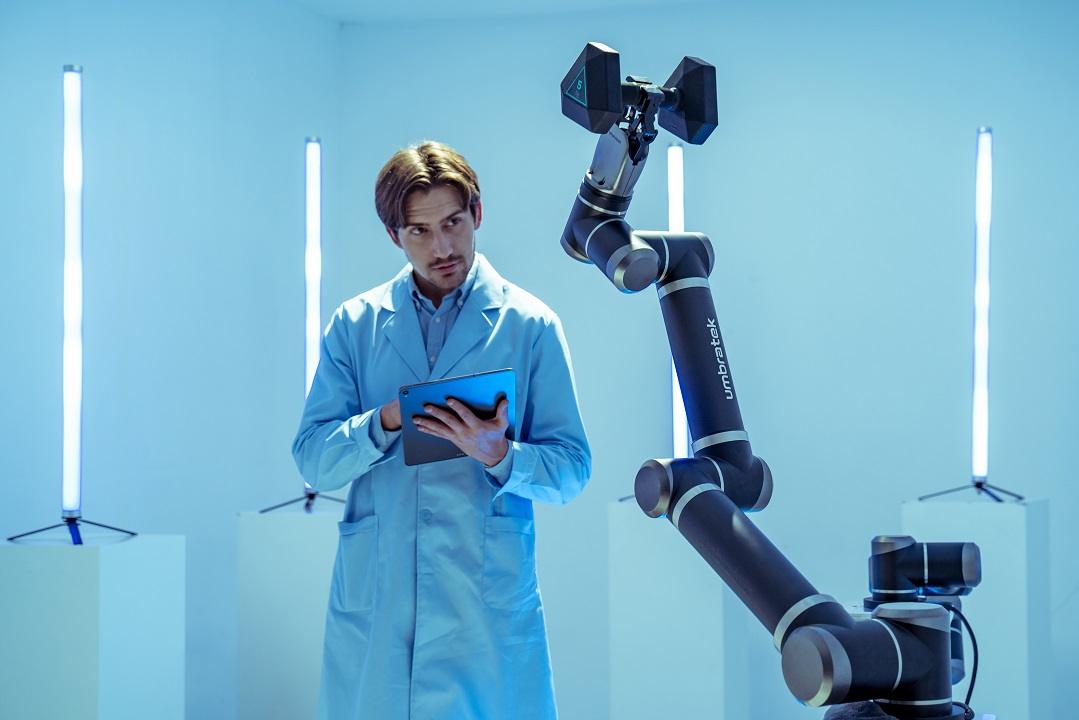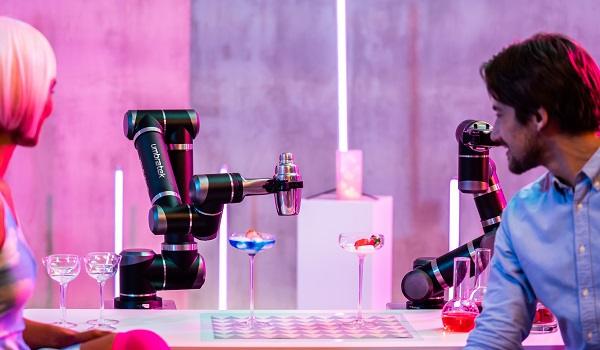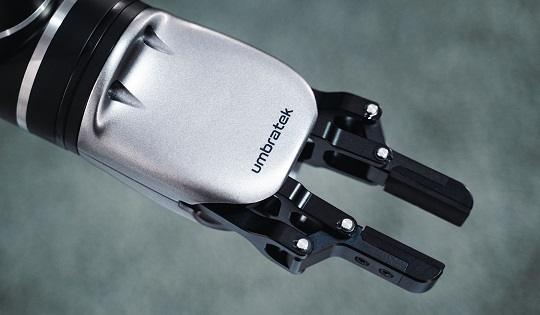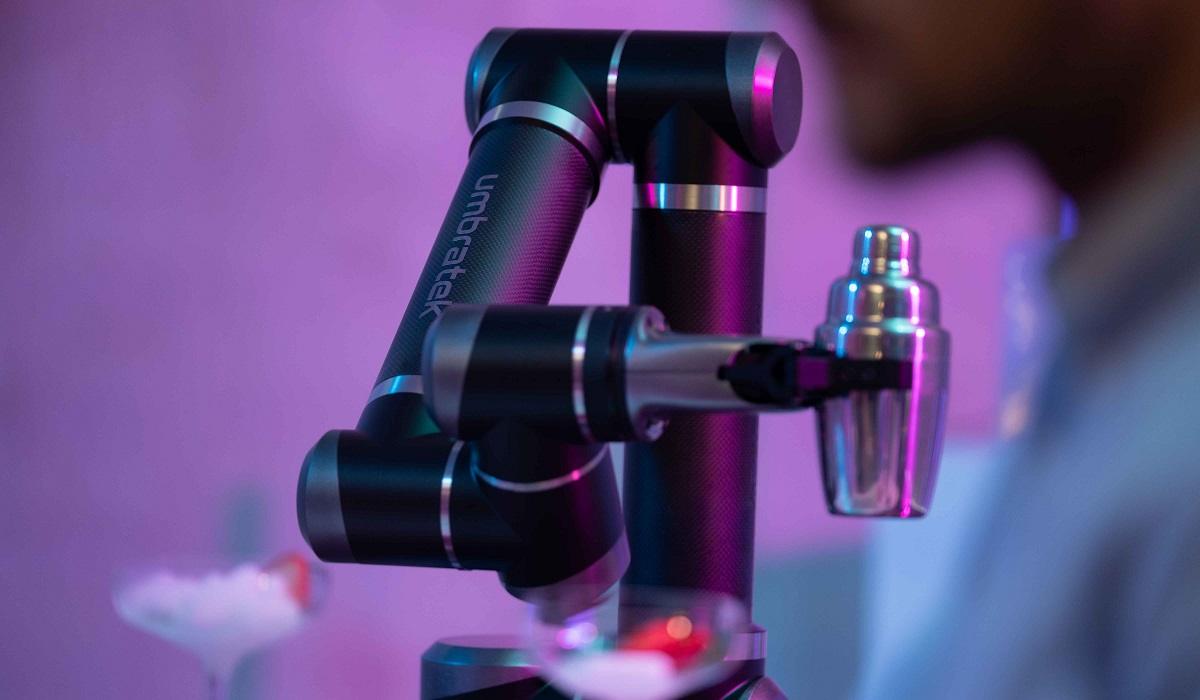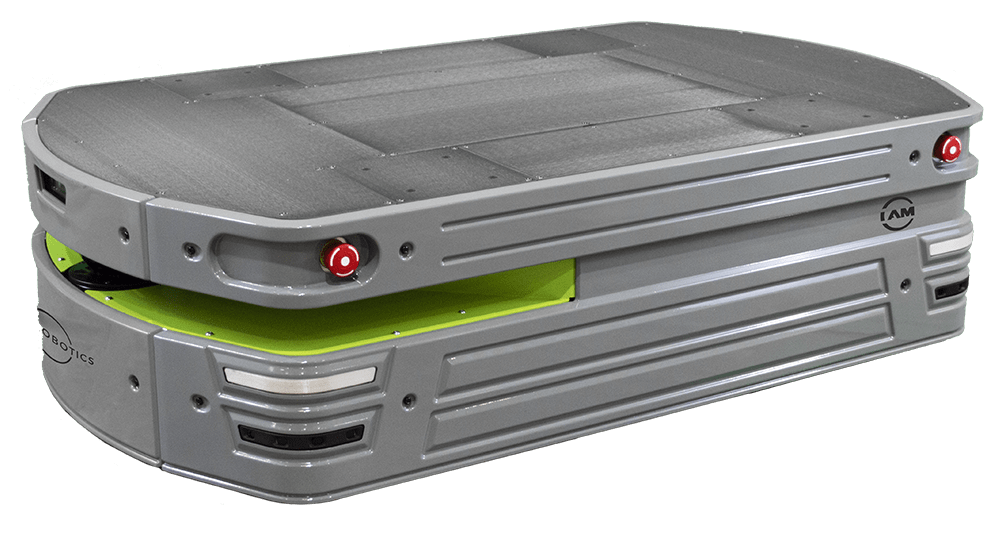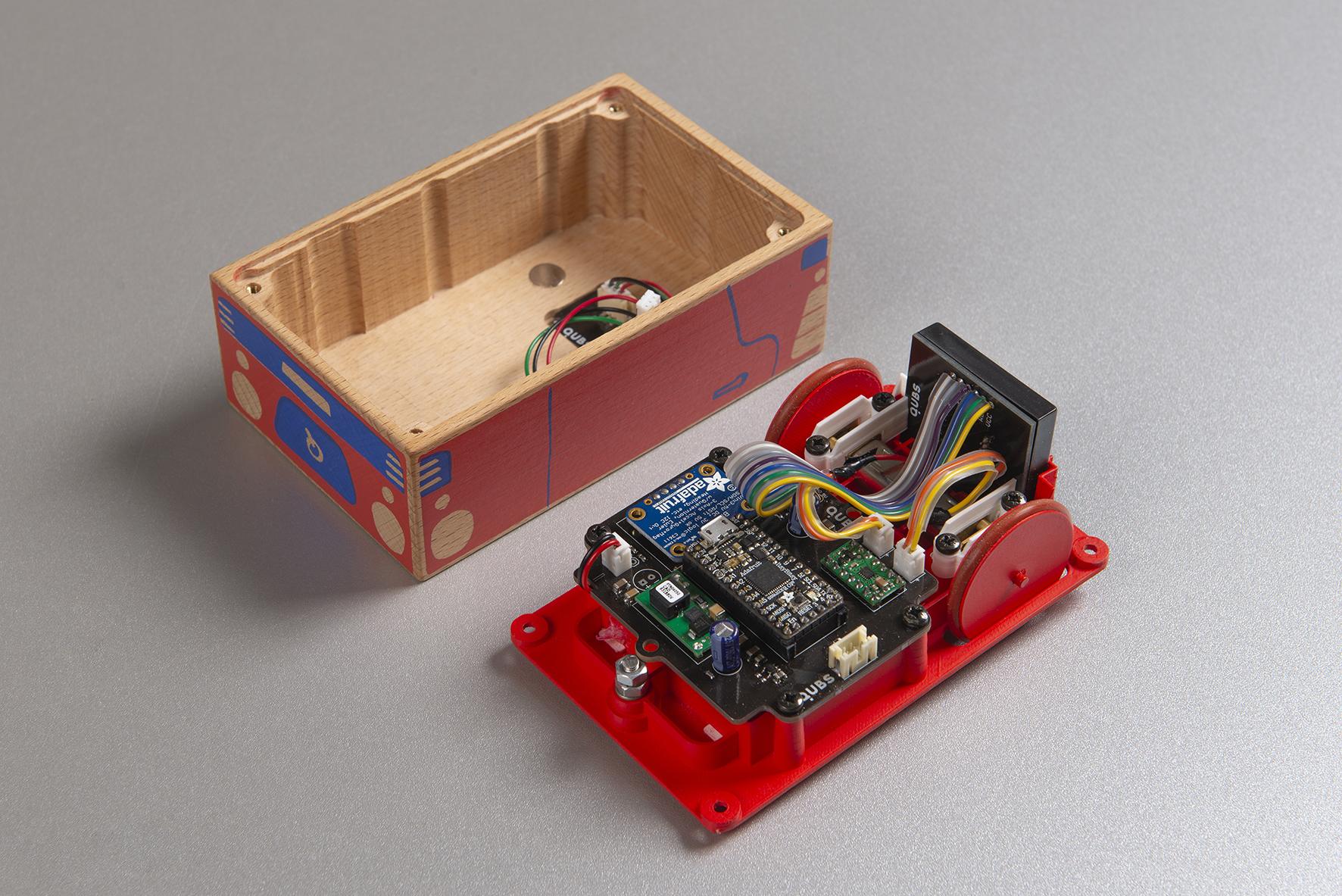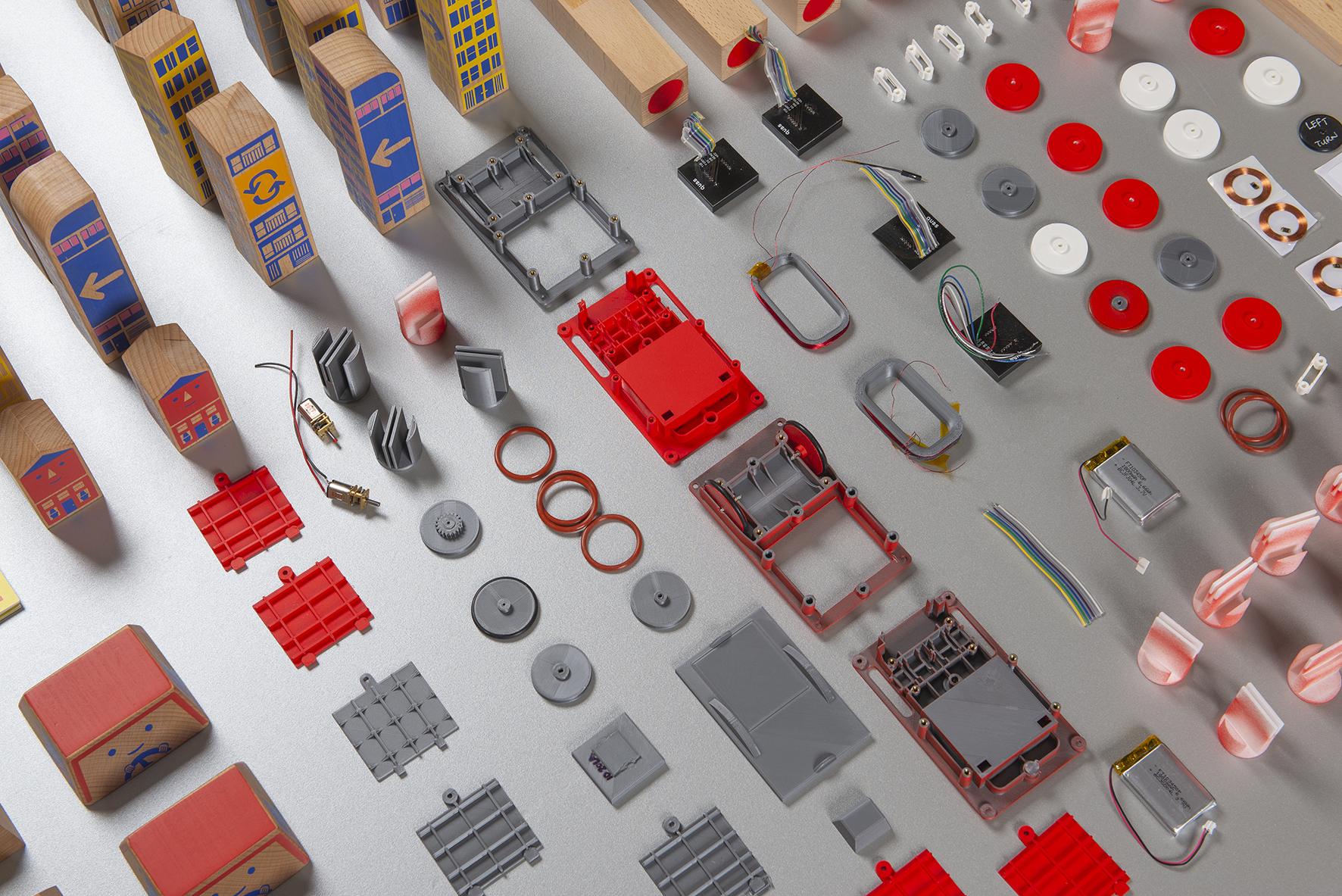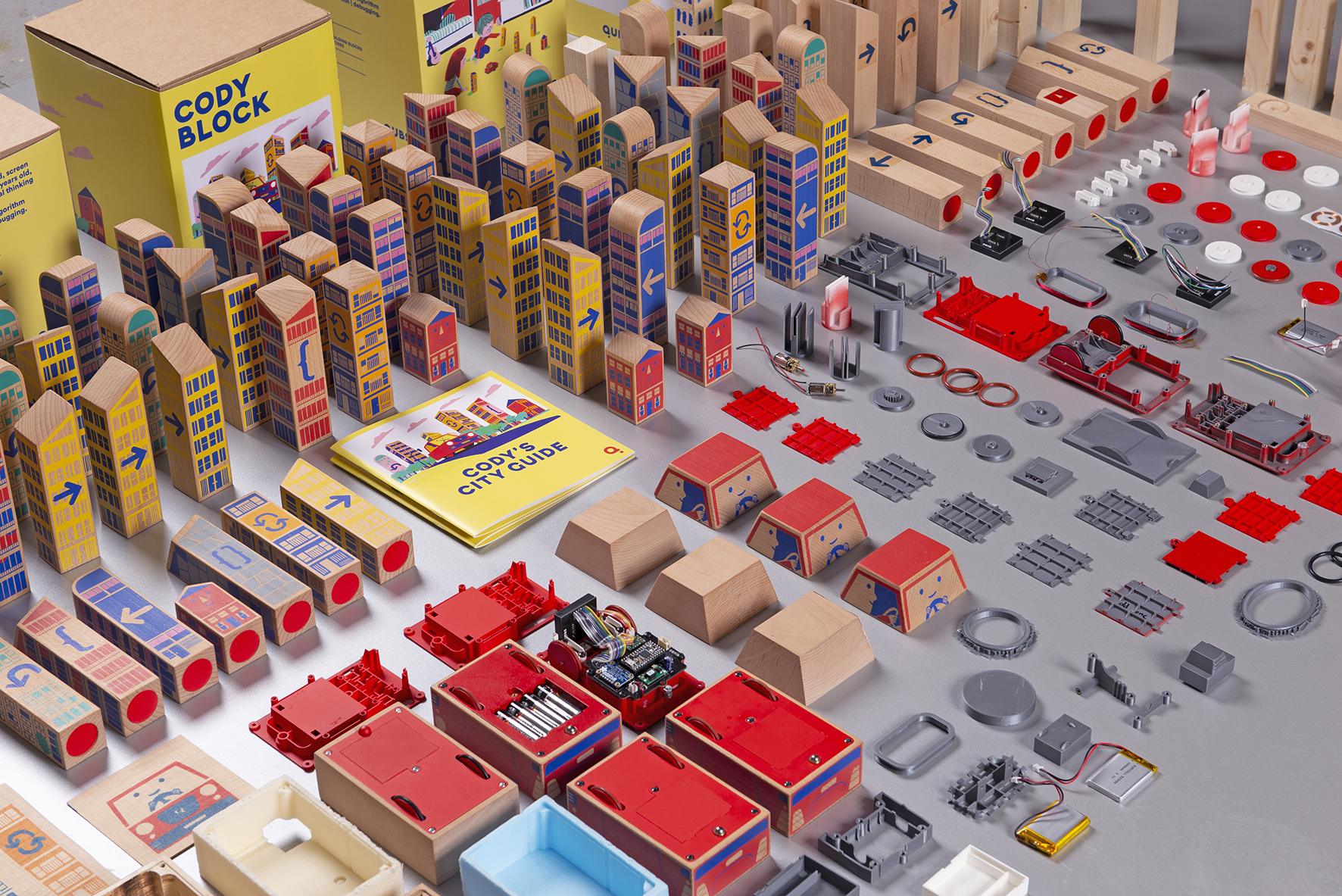Teleskopierbare triflex TRX-Energiekette von igus spart Platz am Roboter und sorgt für einen Rückzugsweg von bis zu 40 Prozent
Köln, 6. Mai 2021 – Damit Leitungen an Industrierobotern sicher, leicht und kompakt in der Bewegung geführt werden können, hat igus jetzt die vierdimensionale Energiekette triflex TRX entwickelt. Die neue Designstudie löst klassische Roboterschlauchpakete und Rückzugsysteme ab. Das Besondere: Ein einzigartiger Teleskop-Mechanismus im Inneren der Kette sorgt für einen Rückzugsweg von 40 Prozent. So können Anwender an der dritten Achse ihres Roboters Platz, bis zu 83 Prozent Gewicht und hohe Kosten für Rückzugsysteme sparen.
Die dreidimensionalen triflex R-Energieketten von igus sind in der Industrie weit verbreitet, wenn es darum geht, Leitungen und Schläuche am Roboter ausfallsicher zu führen. Damit bei der Bewegung des Energiekettensystems keine Schlaufen entstehen, die den Roboter behindern könnten, kommen bisher Rückzugsysteme auf der dritten Achse zum Einsatz. „Die Achsen an den Roboter bieten jedoch immer weniger Platz, daher musste eine neue Lösung her“, so Jörg Ottersbach, Leiter des Geschäftsbereichs e-ketten bei der igus GmbH. Gesagt, getan, wurde auf Basis der triflex R-Energiekette das triflex TRX-System entwickelt. Hierbei handelt es sich um eine vierdimensionale Energiekette in der das Rückzugsystem bereits integriert ist. „Mit TRX schaffen wir eine platzsparende Kette, die direkt kompakt auf der dritten Achse fixiert werden kann. Die Energieführung tordiert in sich, verlängert und verkürzt sich spiralförmig wie bei einem Teleskopauszug um bis zu 40 Prozent“, so Ottersbach. Dazu setzt igus in dem einzigartigen Mechanismus auf ein Schraubverbindersystem sowie auf ein integriertes Rückstellband. Das Band bringt die Kettenglieder immer wieder in ihren Ausgangspunkt, dabei ist die Rückzugkraft einstellbar. Die Leitungen werden in Form einer Wendel in die Kette hineingelegt und sicher in der Bewegung mithilfe der Kette geführt. Zusätzlich sind die Leitungen und Schläuche in der Mitte der TRX befestigt, um beim Ziehen an der Kette nicht die Position zu verlassen.
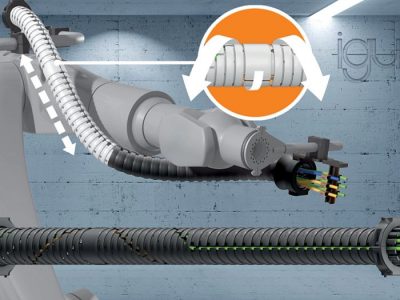
83 Prozent Gewichtsersparnis
Im Vergleich zu anderen Rückzugsystemen spart der Anwender bis zu 83 Prozent Gewicht ein und benötigt weniger als der Hälfte des Platzes. So lässt sich die Performance des Roboters weiter verbessern. Weiterhin reduzieren sich die Kosten durch den Verzicht eines zusätzliches Rückzugsystems deutlich. TRX kann einfach mit bestehenden triflex R-Ketten der Serie TRE verbunden werden. Wie auch bei triflex R lassen sich die Leitungen schnell von außen in die Energiekette befüllen. Die neue TRX stellt igus Interessenten ab dem 5. Mai 2021 auf seiner neu aufgelegten real-virtuellen Messe vor.
Mehr Infos zur TRX finden Sie unter: https://www.igus.de/info/triflex-r-trx

